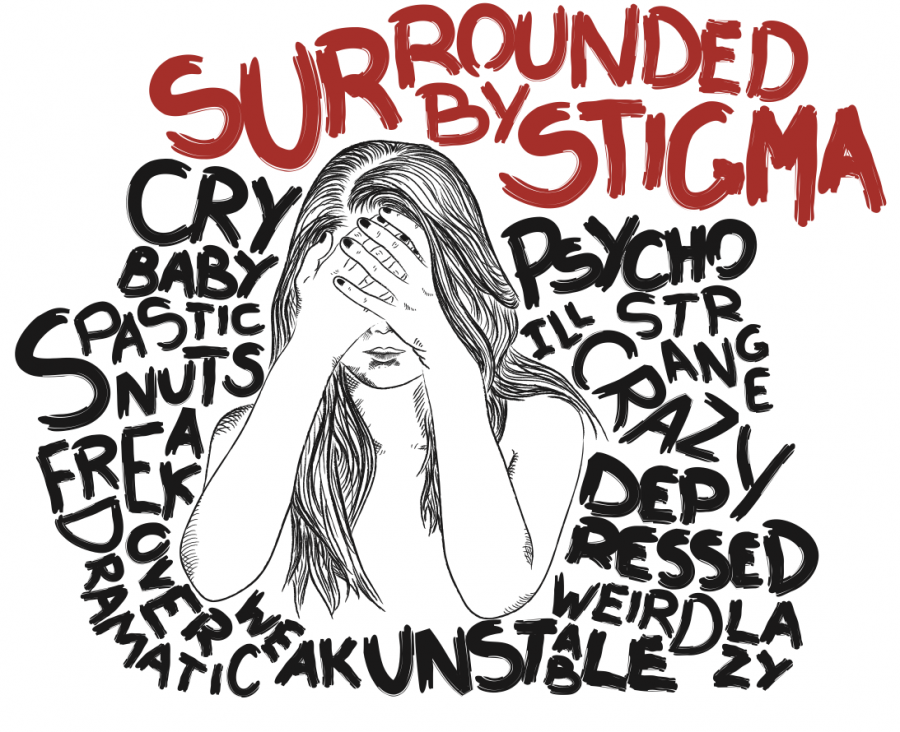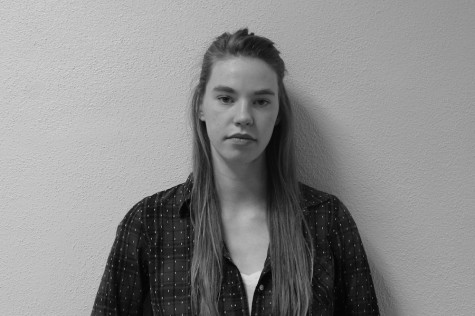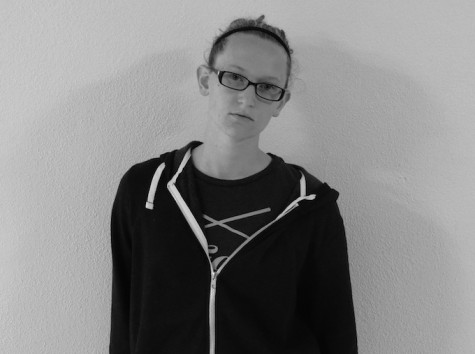Surrounded by stigma
Study suggests stigma may discourage some from seeking help

Art by Maddy Bremner
November 12, 2014
Upon seeing sophomore Mira Swartz bouncing through the hallways, identifiable by her florescent red hair and short stature, some might think she is just another carefree student.
With her constant positivity and extensive list of time consuming activities, she does not appear to fit any of the stereotypes typically connected with mental illnesses.
“I’m clinically diagnosed with depression,” Swartz said. “I got diagnosed around five years ago.”
Swartz said she dealt with a lot of bullying in middle school, which lead to a suicide attempt.
After she stayed at Fairview Hospital for two weeks and got constant support from counselors, therapists and her parents, Swartz returned to school with a new perspective.
Swartz said she is now very open about her mental illnesses with peers and freely answers questions or shares her story.
However, her willingness to be herself has not always been received well by her peers.
“There’s a few kids who have been mean to me since second g
rade. There’s always those kids who see how you’re different and talk about you because of it.”
Swartz said she felt uncomfortable moving into high school because of her difficult experience in middle school, but she is now in a better place mentally.
“As a sophomore, I’m in that place where I’m helping myself and others,” Swartz said. “I’m part of Natural Helpers this year, so I can help others who are going through the same stuff I had to do.”
Swartz said she thinks it’s very important for those who are suffering to know there are others out there.
“Nobody is alone, no matter how much you think that is true.” Swartz said.
Generally, the public does not recognize the stigma surrounding mental disorders, according to clinical psychologist Cheryl Goldenberg.
“The stigma people worry about has to do with being considered disturbed or crazy or insane,” Goldenberg said. “They worry about whether people will trust them or if their jobs, if their schooling will be affected because of a mental health disturbance.”
According to Goldenberg, students can help reduce the stigma simply by being more open about it. This in turn will help to defeat the stigma surrounding people who suffer from mental health issues.
“The more people openly share that they are depressed or anxious or that they have something going on on a continuum of mental illness, the more support people can get,” Goldenberg said.
Recent research from the Journal of Psychological Medicine suggests that up to 75 percent of Americans who suffer from a mental illness never seek help. This is because of the extreme stigma surrounding mental illness and the social implications of seeking care for it, according to the study.
Sophomore Genesis Buckhalton said she believes this stigma hurts the self worth of individuals facing these problems.
“It makes them feel like there’s something wrong with them,” Buckhalton said. “It also makes them feel bad about themselves.”
Despite this apparent increase in mental health education, students often don’t realize they have a network of counselors prepared to help them when they face tough situations like this, according to the head of the counseling department Barb Nelson.
“Many students come in with specific issues they want support in,” Nelson said. “Others could benefit from these support groups, but they don’t know about it.”
A closer look at aiding mental disorders
Park counselor Laura King provides an insight into helping with mental illnesses.
How can students with mental illnesses receive help in our school?
There are many people in this school who are prepared to help these students get to a better state especially in the counseling office, but overall nobody in the school is trained to provide therapy for depression.
How should friends help if they know someone with a mental illness?
They can initially listen and try to be supportive, but they can get into dangerous waters when they try to be the sole support. The best thing they can do is make an adult aware of the situation, whether it is a teacher, a school counselor or even their parents.
Have you noticed any trends of certain groups of students who come to you with signs of mental illness?
Depression does not discriminate between socioeconomic groups or race. I see it come up with all kinds of students. For example, seniors start to really feel stressed when it comes to the prospect of college, and that stress can lead to anxiety, which can lead to what is called situational depression.
What are your thoughts on stress that comes from school work?
I am a strong believer that students should have balance in their lives. I want them to take rigorous course work, but I don’t want them to feel overwhelmed. The same goes for athletics and extracurriculars. We live in a fast-paced society where it is easy to take on more and more, and sometimes as a result their quality of life suffers. They’re never sleeping or relaxing, and the joys of participation progressively gets harder to notice.
What can the student body do to help when it comes to mental illness?
The importance of kindness toward somebody else. You never know what someone is up against, and a kind word or gesture can make such a difference in a person’s day. We should start practicing not only kindness but sensitivity and compassion on a regular basis, not only toward their social groups, but to the student body as a whole.






